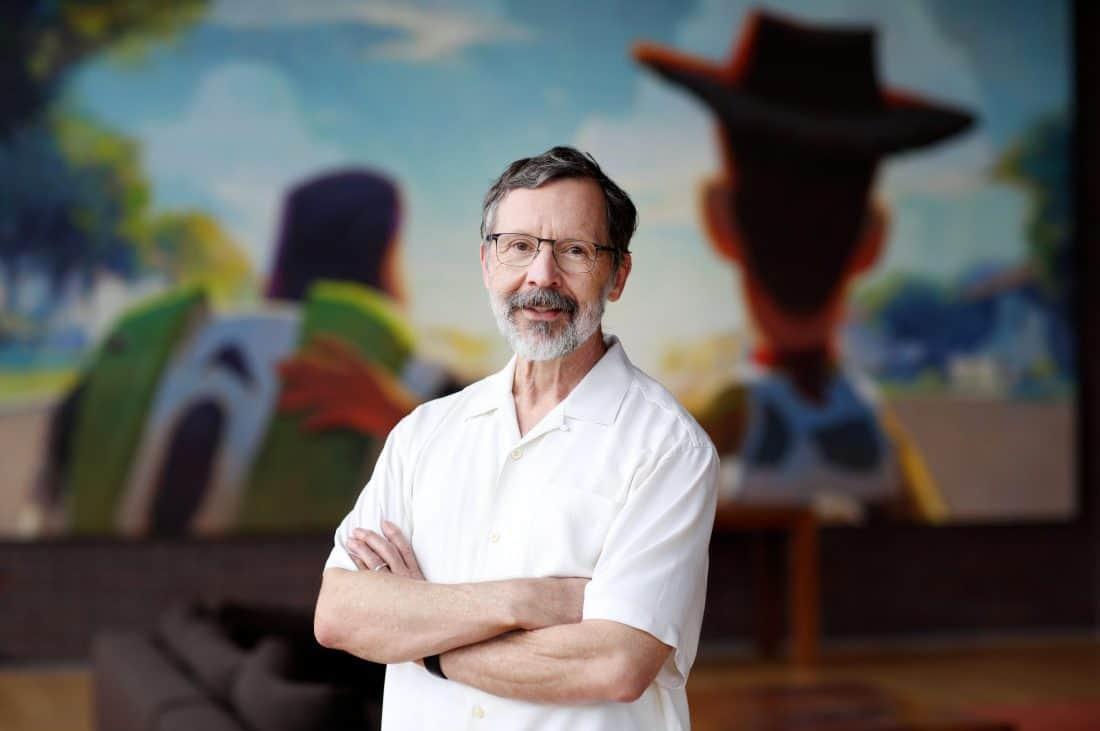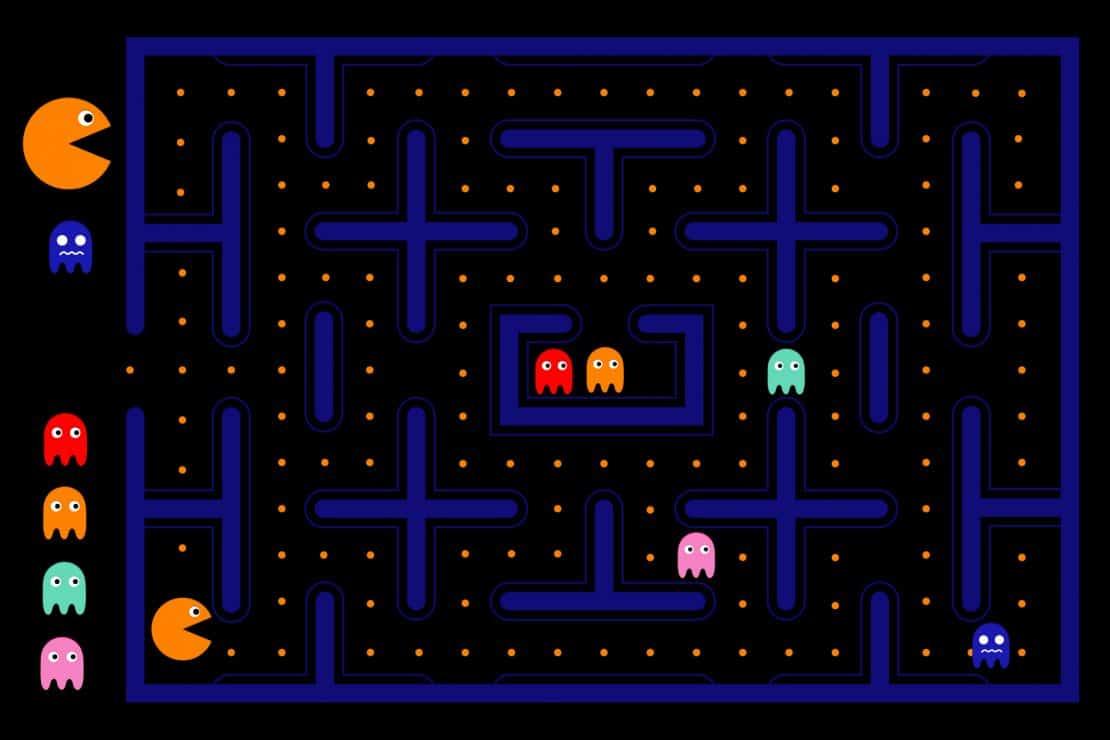5Sep2016
From the world of Walt Disney, through a galaxy far far away, to beloved stories of toys, bugs, and furry monsters, Edwin Catmull has blazed a trail as a computer scientist turned business leader who has sustained the creative talent and innovative legacy of Pixar Animations Studios for 30 years.
When you call Pixar Animations Studios, you are greeted with theatrical background music. The melody is the soundtrack of The Good Dinosaur, which was released in late 2015. You can almost imagine this song playing in the background while Catmull walks past the man-sized, Lego reproduction of Toy Story action hero Buzz Lightyear at the headquarters of Pixar.
Suddenly a friendly, warm voice interrupts the music. Edwin “Ed” Catmull is on the other end of the line. The co-founder of Pixar Animation Studios and President of Pixar and Walt Disney Animation Studios, who leads hundreds of troops to help break the barriers of human creativity. A man whose failure with traditional animation led him to discover a new way in which to revolutionize the world of animation. A man who could rightfully be called Mr. Creativity.
Story behind the story
Pixar celebrates its 30th anniversary in 2016. During the past 30 years, the film studio has released 17 feature films and grossed over $9.7 billion worldwide in revenue to date. However, the spark that ignited the Pixar flame dates back even further to Catmull’s childhood. Back in the 1950s, the young Catmull was totally fascinated by Walt Disney and his television appearances, in which he revealed how Disney stories actually came to life.
“It was not only about storytelling but he also talked about the process and the technology. So I grew up having them both joint together in my mind,” he describes.
Come to think of it, Catmull seems to be following in the footsteps of his childhood idol by revealing the wizardry of his craft in his book Creativity, Inc.: Overcoming the Unseen Forces That Stand in the Way of True Inspiration. Only for Catmull, the focus is not so much on the actual process of filmmaking, rather he taps deeply into the details of inspiring a creative culture and leading people.
It was also Walt Disney who inspired young Catmull to dream of becoming an animator. However, when Catmull graduated from high school, he discovered there was no clear path for him to animation. Instead, he decided to pursue a career in physics and computing.
“I initially switched to physics because I wanted to be at the frontier. At this time computer science was brand new, and while I graduated with my undergraduate degree in physics, I realized that with computer science I was already at the frontier.” That was back in the 1970s.
Little did he know that physics would put him on the path to where he always wanted to be, creating inspiring stories. During his studies, Catmull joined other computer graphics pioneers of and found a way to combine his love for both technology and animation. Soon he set himself the goal of making the first computer-animated feature film, which he tirelessly worked to accomplish for 20 years.
While he figured out how to turn computer graphics into life-like 3D, Catmull moved into the field of motion picture production and in 1979, he joined George Lucas at Lucasfilm, where he became Vice President at the seminal Industrial Light & Magic computer graphics division.
Catmull’s years of helping breathe life into Lucas’ vision of Star Wars with jedi knights and droids came to an end in 1986 when Lucasfilm decided to sell the computer graphics division. Lucasfilm didn’t share Catmull’s passion for computer-animated films and the animation wizard knew he needed a partner who would support his dream. In the end, it was none other than Steve Jobs who bought the division and paved the way for Pixar Animations Studios to work its big-screen magic.
Finally in 1995, after several successful computer-animated short films Toy Story, the studio’s first feature film, was released in theaters. It became the highest grossing film of 1995, making $192 million domestically and $362 million worldwide. Since Toy Story Pixar has produced one blockbuster after the other and was eventually snapped up by the Disney mass media conglomerate in 2006. Seems like all Catmull’s boyhood dreams came true after all.
Want creativity? Make it safe for people to talk
There would be no Pixar without the technology Catmull and his crew developed and built so tenaciously for decades. However, as much as Catmull values their computer animation breakthroughs, there is one other element in which he takes as much pride and that is Pixar’s creative culture.
“The first agenda was to figure out how to make a movie using a story and technology, but the second agenda was how people work together and what it is that makes a group successful,” he explains.
As time went by, this secondary mission assumed greater importance and he realized that he had stepped away from technical work. Instead, he started spending his time figuring out how to remove fear from an organization and ultimately how to make it safe for people talk. For Catmull, safety is essential for creativity. “If you make it safe for people to talk, then they all become more creative.”
Catmull believes that everyone has inherent creativity, which he defines as problem-solving and expression. Yet what often prohibits us from expressing ourselves or tackling the problems we face is a matter of our own internal barriers and blocks. “That, if somebody is not saying something when they are working on a problem, is because they’ve got fears and worries.”
A good leader doesn’t try to make people creative. What a leader ultimately needs to know “is how do you remove people’s internal barriers and allow them to grow and to flower,” Catmull ponders. In order to do that a leader needs to know what those barriers are.
One good example of how to remove barriers to participation is Catmull’s idea of changing the shape of Pixar’s meeting room tables. You see, Catmull noticed that sitting around a long elliptical table created a certain hierarchical structure in the meetings. However, when management sat in the middle, the conversation hovered around the table’s midsection, leaving out the people sitting at the ends.
Catmull wanted everybody to participate in the conversation so, he decided to switch to round tables. This small practical solution completely transformed the atmosphere at meetings simply because people now felt more equal. Many times it is the smallest things that matter, things that we are not always even aware of.
In order to motivate people to be more engaged with their work, Catmull believes they need to have the power to change things. As such, he initiated the idea of Notes Day, where the entire Pixar company gets together to figure how to operate more efficiently. During the first the Notes Day, an array of different issues were discovered as Catmull puts it, “all it did was reveal the tip of the iceberg.” However, a day which seemed difficult at first led to a greater appreciation for the need to understand the underlying issues at hand. The result of which is now a company that identifies faster and more efficiently how to improve its processes.
Look for potential
No one in an organization is immune to their own internal fears, not even leaders. In the same way that employees may have fears that prevent them from being more creative, leaders may also struggle with fears that might ultimately restrict organizational creativity. Catmull’s message to leaders who are hesitant about giving their staff the freedom to join innovation and creative processes is clear.
“A leader has to be honest and vulnerable. Lot of leaders believe that to be a good leader you have to have the confidence to be right. And what that does, is that it gets in the way if you’re not right. So one needs to be vulnerable and to listen because you can’t always be right.”
For Catmull, self-awareness is therefore an important asset for leaders building and leading a creative culture. A leader should be aware of what is going on and also understand that there are things going on that no one can see.
“We only see things from our own personal filters and it’s important that we step back and realize that our ability to see things is limited,” he concludes.
One of the elements required to foster a creative culture is to recruit creative people. So what is Catmull’s secret for hiring creative talent?
“For me the thing that I’m looking for is potential. It’s not necessarily can they do the job, it’s do they have the potential to grow in the job,” Catmull explains. He admits that this is a little more risky approach and you won’t always get it right, but he believes that if you look for potential rather than their particular ability of the time, in a long run it pays off.
For Pixar and for Catmull himself, a primary goal has always been to keep the company’s creative culture alive. However, it’s not always so easy to sustain a creative culture and pursue growth at the same time. This is a problem many startups face today. Catmull says startups should be paying attention to the “creeping conservatism that enters the culture without it being challenged.”
So it’s not the startup, it’s what happens after the startup has become successful. For Catmull the leader’s role is essential. “I always saw that my job and the job of leadership is to continue to look for the conservative elements which are inhibiting people and getting in the way of a culture.”
Virtual reality is not storytelling
Although Catmull is a creative force at the vanguard of animated filmmaking even he has some reservations. They involve using virtual reality for storytelling. Is this creeping conservatism raising its head, or is it something else?
“I think VR is a very important technology, there are areas where it will be used and it will have an effect on the way we make our movies,” Catmull explains. In fact, his reservation is not so much about the technology itself, but the misconceptions it may create in viewers. For him VR is not the same as storytelling, they are two different things.
He cautions that one shouldn’t confuse a technology with storytelling. In particular, VR is not like filmmaking. Stories told by film do not take place in real time. The challenge of matching the elaborate hand crafting of a story in film has yet to be solved.
However, Catmull regards VR as a technology that supports the movie industry. “Virtual reality does represent significant opportunities which will result in a lot of investment on our part. We’ve been doing a lot of research on it and I think it has major impact on our tools and the way we think about things.”
Built to last
Creativity and risk usually go hand in hand – one might even ask if one could exist without the other. Failure is also often a close companion of both. For Catmull, the simplest way to manage risk and failure is to have the right response if things don’t work out. One of his insights is that “It is not the manager’s job to prevent risks. It is the manager’s job to make it safe to take them.”
He believes that leaders shouldn’t respond negatively to mistakes. The response should be, ‘okay it didn’t work out, we all learnt from it, where do we go from here.’ It’s your job to make it safe for people to take the risk. If they feel safe then they will respond and it is that response to the risk that helps the organization to move along quickly.”
Catmull’s sympathetic approach to his Pixar team is also reflected in Pixar films and their characters. There is no doubt that the approachability of the characters and storylines is an important ingredient in their success.
Although Catmull comes across as very humble and down-to-earth, there seems to be another side to him, and that is his burning drive to do something remarkable and be the first to do it. First, that ambition involved pushing the boundaries of computer science; later, it meant winning the race to make the first full-length computer-animated movie. The same kind of attitude also echoes his thoughts about Pixar’s future.
“The exciting part and the challenge has been to keep a culture that sustains itself and will keep on doing something that is new and original.”
Now, 20 years after the release of Toy Story, an Academy Award-winning animator Catmull seems thankful for this journey. “It’s been immensely gratifying and the challenge has been to keep it going.”
Pixar is clearly not quitting any time soon and the success of Toy Story and its sequels prove that the Pixar’s magic has not diminished.
This article was first published in the 2016 print issue of Nordic Business Report. Get your digital copy of the magazine from the link below.

 by:
by: 
